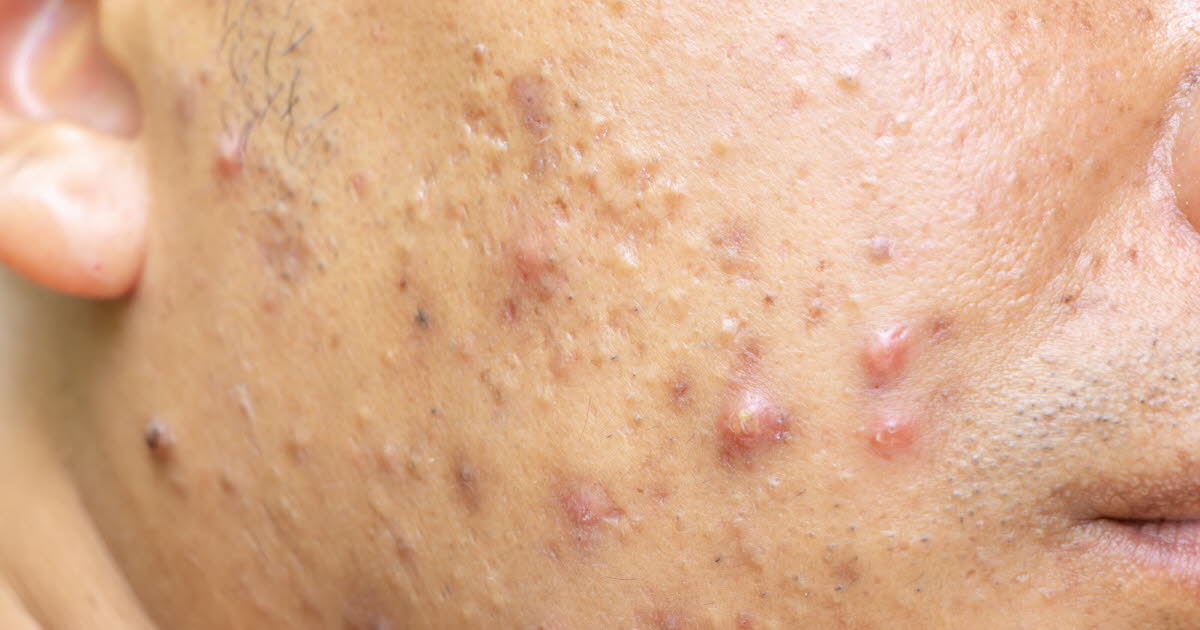Published in the Journal of American Academy of Dermatology (JAAD)an epidemiological study of 50,000 individuals aged 16 and over living in 20 countries across five continents, representing more than 50% of the world's population, provides for the first time an overview of the prevalence of acne in scale of the globe.
She observes disparities by age, gender, geographic region, as well as the consequences on quality of life and stigma.
20.5% of those over 16 say they have acne
The ALL study found that the global prevalence of acne is 20.5%. This is highest among adolescents and young adults (16-24 years old), reaching 28.3%, but does not spare adults aged 25 to 39 years old, with 19.3%.
Generally speaking, women (23.6%) are more affected by acne than men (17.5%). Latin America and East Asian countries are at the top of the regions most affected by acne.
Significant differences were indeed noted between geographical areas: the highest prevalence rates of acne were observed in Latin America (23.9%), East Asia (China, South Korea, Japan: 20.2%), Africa (18.5%) and the Middle East (16.1%), while the lowest rates were recorded in Europe (9.7%) and Australia ( 10.8%).
The food trail
“ This study provides in-depth understanding and novel perspective on demographic factors influencing acne epidemiology globally », Explains Professor Jean-Hilaire Saurat, professor of dermatology at the University of Geneva, former president of the ILDS (International League of Dermatological Societies) who participated in the study.
“ The high percentage of acne recorded in Latin America and East Asian countries can be attributed, among other things, to genetic factors, but probably also to cultural and environmental factors in particular diet, the quantity of which of sugar ingested (carbohydrate load) or even the ingestion of more or less high doses of xenobiotics present in the environment and therefore in the diet. »
A xenobiotic is a substance present in a living organism but which is foreign to it: it is neither produced by the organism itself, nor supplied by its natural diet.
Nutritional acne and so-called toxic acne
The specialist refers here to two types of acne: those called nutritional and those called toxic. For the first category of nutritional acne, a link between acne and glycemic load has been shown by numerous studies.
Explanations: consuming sugar directly activates the production of the growth hormone IGF-1, which increases the flow of sebum from the sebaceous glands, and therefore promotes acne.
Regarding toxic acne, Professor Jean-Hilaire Saurat explains: “ In essence, acne can be considered a signal, a sentinel revealing exposure to xenobiotics, foreign substances that trigger specific biological reactions in the human body. This is the extreme example of “chloracne”, induced by dioxin, a persistent organic pollutant. But it has been shown that many chlorinated and/or benzene molecules among others, notably present in certain environmental pesticides and biocides, activate the same receptor (AhR). Sebaceous stem cells, from which the sebaceous gland and duct are formed, are extremely sensitive to environmental signals activating this AhR receptor.. »
In other words, the modification of the environment of the stem cells, via the diet and its toxic content, will act in such a way that the sebaceous glands will present a structural anomaly leading to the obstruction of the excretory duct and the appearance and then the persistence of acne.
A degraded quality of life
Furthermore, individuals with acne all over the world face various consequences on a daily basis: they feel fatigue, reported by 50% of them, and experience difficulty sleeping, up to 41%. Because of their acne, they are forced to frequently abandon activities that are important to them (27%).
31% of them feel excluded or rejected by others. They also express the feeling that people avoid touching them (27%) or going near them (26%).
Source : Saurat JH, Halioua B, Baissac C, et al. Epidemiology of acne and rosacea: A worldwide global study. J Am Acad Dermatol. 2024 Jan 4:S0190-9622(24)00002-1. doi: 10.1016/j.jaad.2023.12.038. Epub ahead of print. PMID: 38184278.https://www.jaad.org/article/S0190-9622(24)00002-1/pdf (ALL study, funded by Pierre Fabre laboratories)

